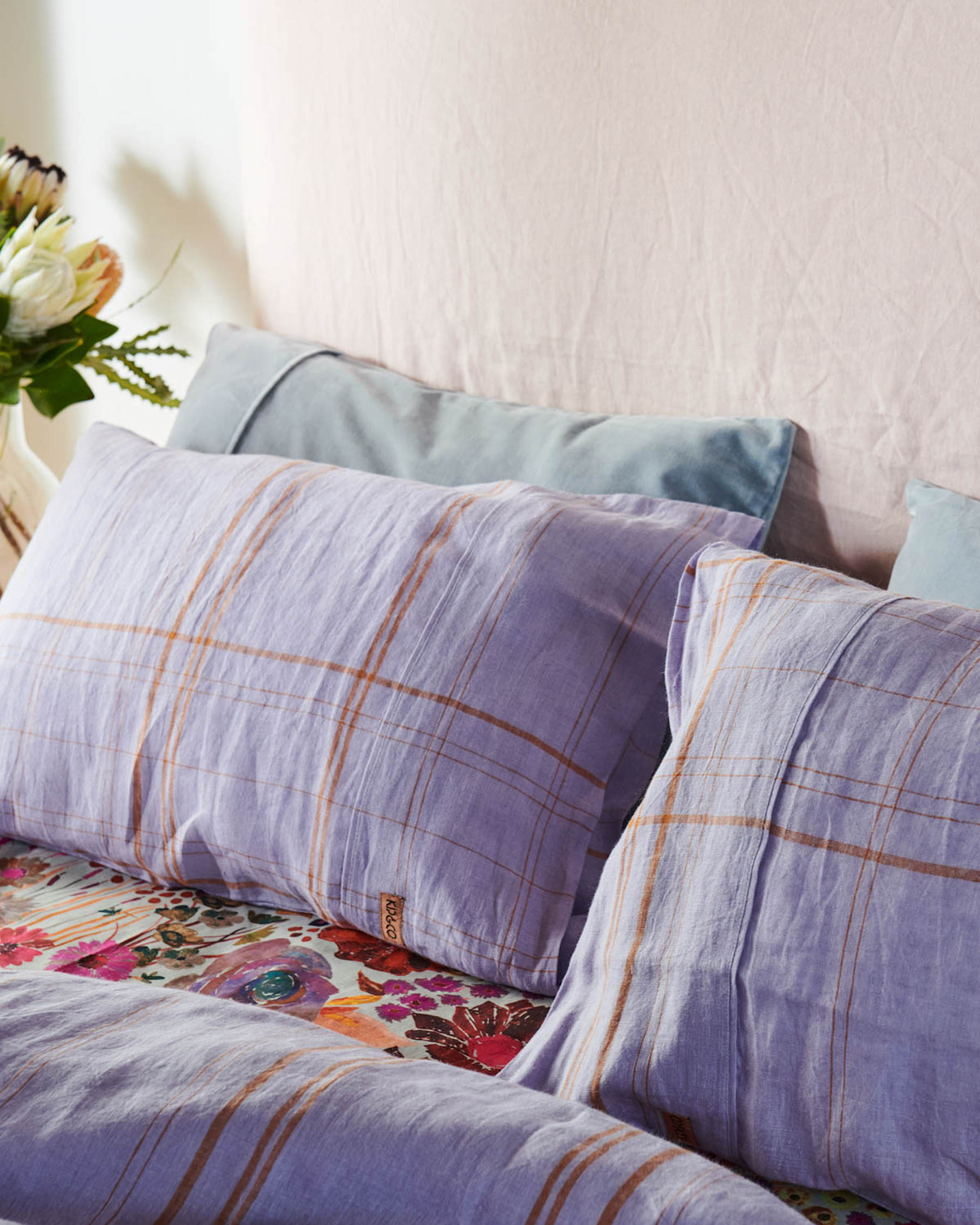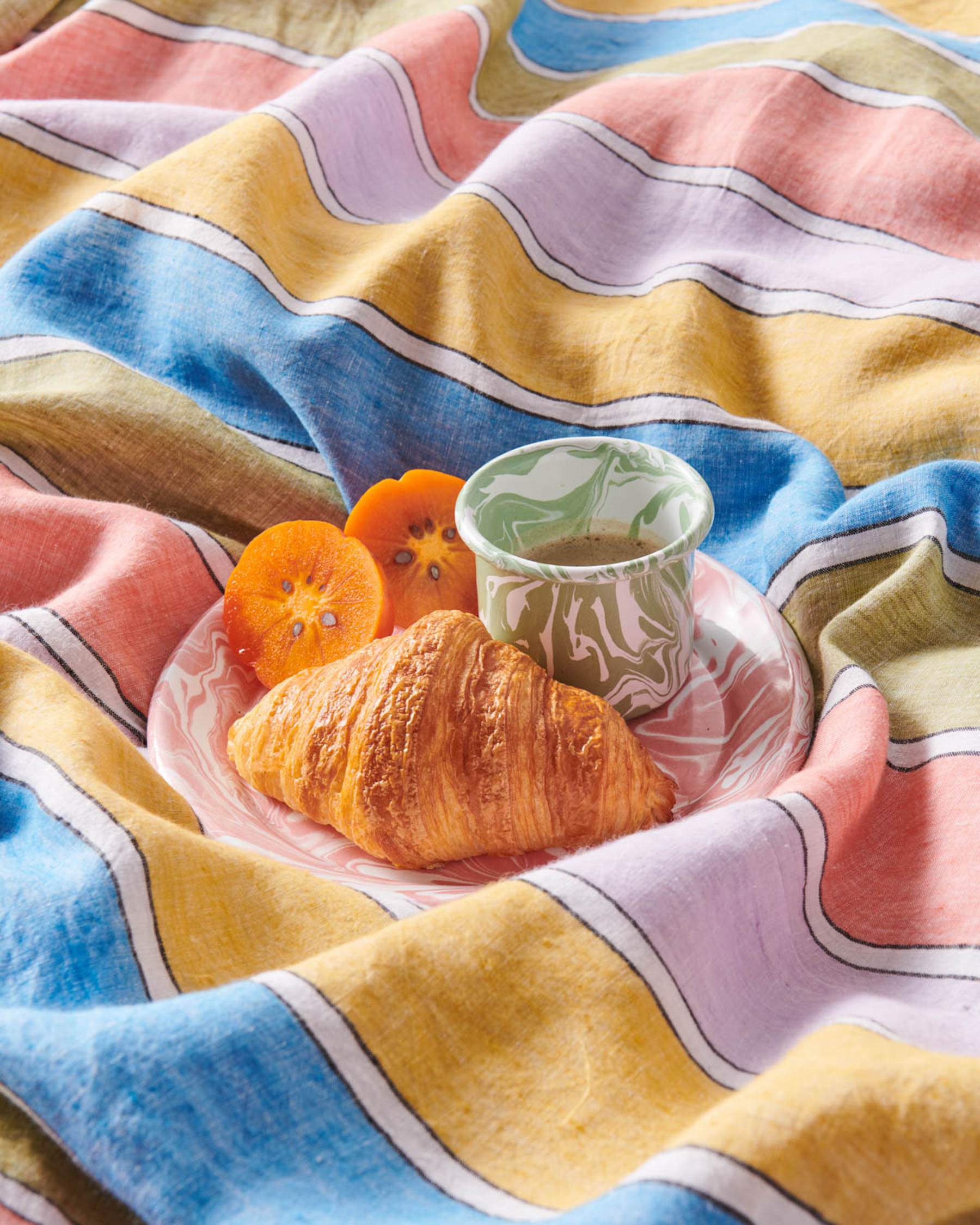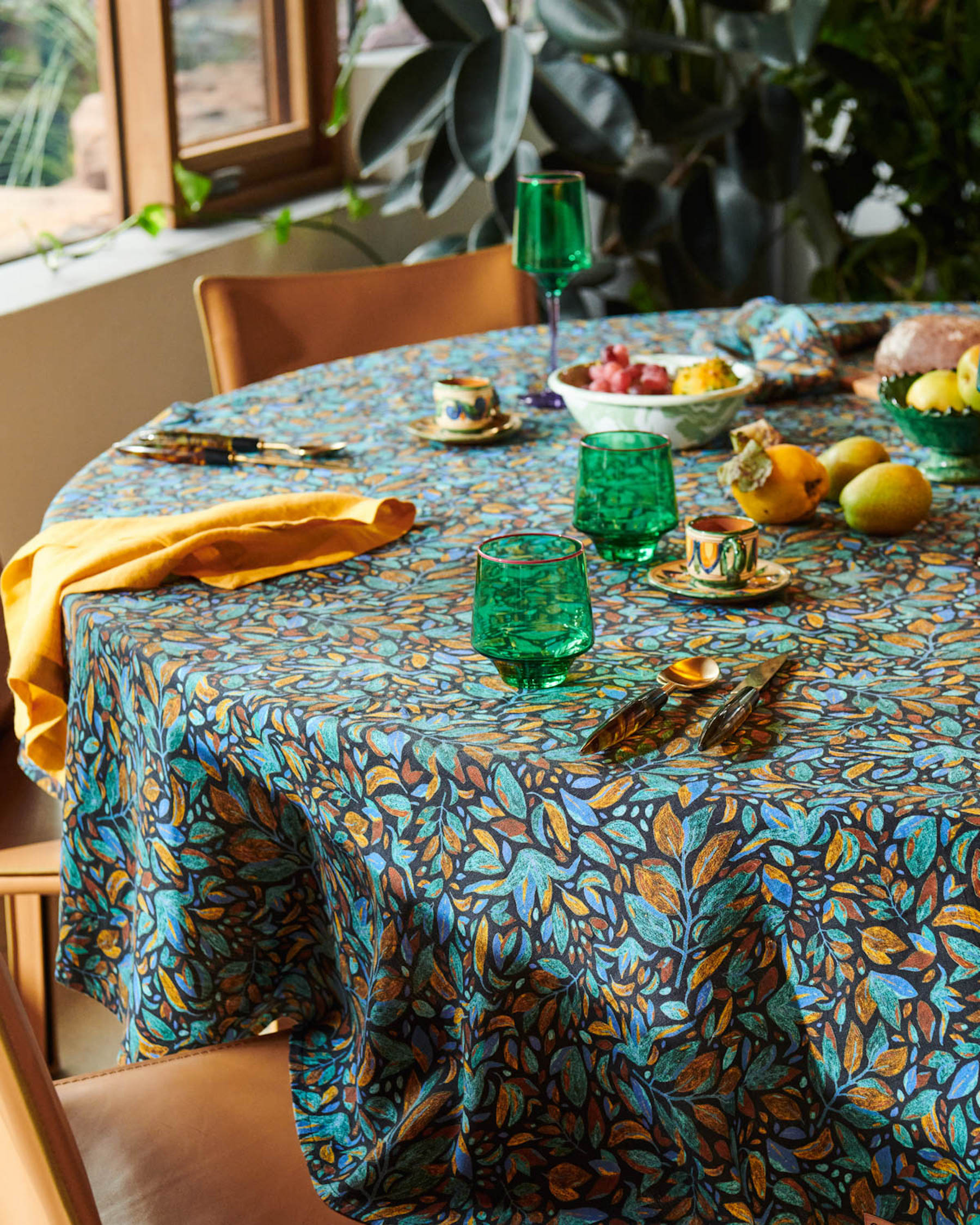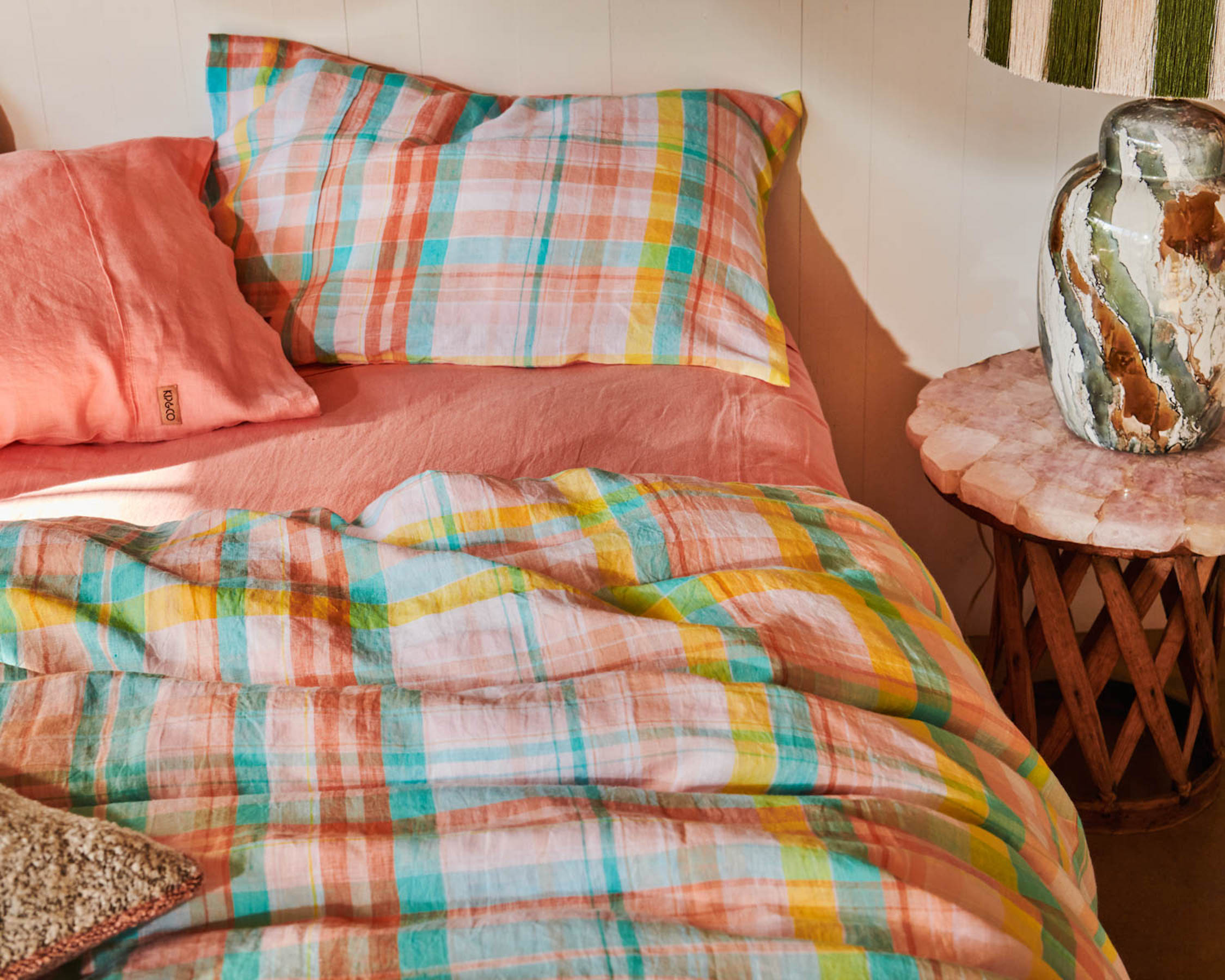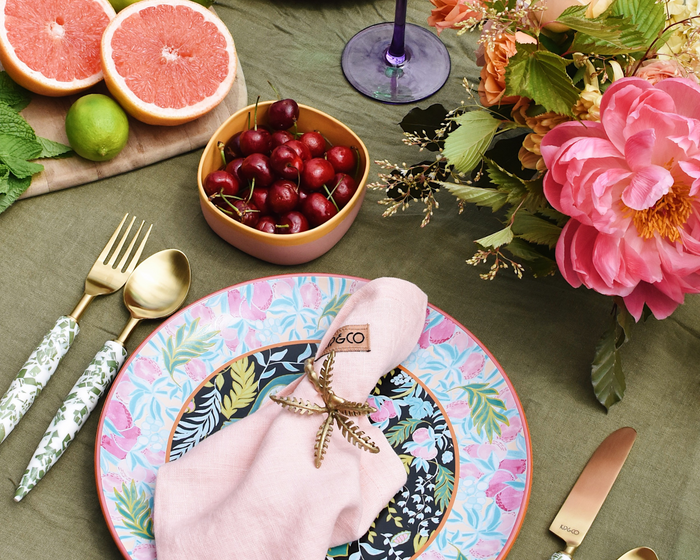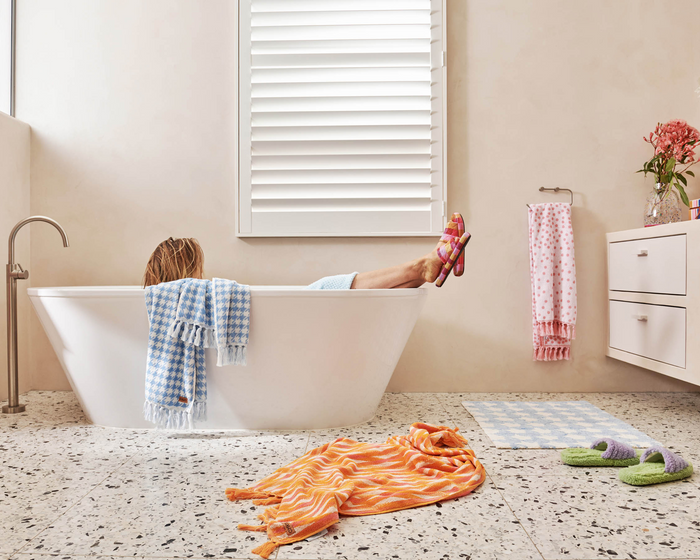Your Doona is a Vegetable
Your Kip&Co linen is made from cellulosic fibres found inside the flax plant which is cultivated, grown, and harvested by farms across the flax regions of France. In fact, you might even have some of this miracle plant in your pantry in the form of flaxseed oil, or the high fibre super-food, flax meal for your morning muesli. The life of your linen begins on the farm, but its sustainability journey continues right up to the end of its life - and we think about it all.
Growing Flax
Grown through Northern France, the flax season begins in mid-March and mid-April with the sewing of the seeds. At around 100 days the flax begins to bloom and the plant has grown to almost a metre tall – alerting the farmers that it's time to harvest within the next 30 days. The longer the farmer waits to harvest, the coarser the fibres become, so harvesting must be timed perfectly to get the ideal product. The flax must be pulled from the ground rather than cut in order to keep the length of the fibre intact, however, the plant’s roots remain - this ensures that the soil remains naturally enriched for the following year without the need for fertiliser.
The flax plant is a tough cookie, and can survive through unexpected weather changes, and poor soil quality. Native to France, the home soil provides the ideal climate for flax growth, and in a typical season, flax can be grown entirely from rainfall alone. When grown elsewhere, farmers must intervene to mimic the natural conditions of France and must use heavy irrigation to provide enough water, as well as harsh pesticides to keep local pests away.
Processing The Plant
Following harvesting, the flax must go through a natural process called “retting”. The retting process breaks down the natural adhesives that bind the textile fibre inside the plant, to the tough straw on the outside. The retting process actually relies on an unlikely, environmentally friendly ally - microorganisms. After being pulled, the plants are laid down in a field, and with the gentle rain and dewy mornings of french summer, the microorganisms rise from the soil to eat away at the plant’s adhesives.
The flax is then sent off for “scutching”. This mechanical and chemical free process separates the fibres by length, with the longest fibres being reserved for your linen, and the shorter fibres kept for paper. Fibres that are too short even for paper are used for composite boards and garden bed topping.
The final step of processing is “combing” - and it's exactly what it sounds like. The reserved longer fibres are manually combed in order to remove any remaining woody matter; they are then graded by quality and bundled in order to be spun and turned into luxurious linen fibre that you know and love.
Weaving, and Dyeing with OEKO-TEX®
Kip&Co Linen Staples pieces are dyed in OEKO-TEX® certified factories. The OEKO-TEX® certification is particularly important as it guarantees the safety of our dyeing process. Mass produced dyes used in textile production can be notorious for being unregulated and for causing damage both to the environment and human health.
A Sustainable End to Your Doona
The end of your textile’s life is just as important as its beginnings. Unlike synthetic fibres, 100% Flax Linen textiles are biodegradable, and just like their vegetable family members, will completely decompose with correct composting. In comparison, synthetic fibres like polyester and nylon are made from polymers derived from petroleum, and can take up to 200 years to fully decompose.
With 23kg of textile waste discarded by each Australian every year - the end of life of our textiles is a top priority, so we’ve partnered with Upparel, a Melbourne based organisation that aims to divert textile waste away from landfills to instead be reused, repurposed and recycled. When your doona has seen its final days, book a collection through our link, and we’ll give you a big high five in the form of a $25 voucher!








